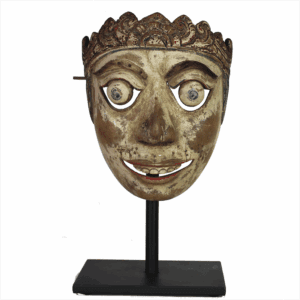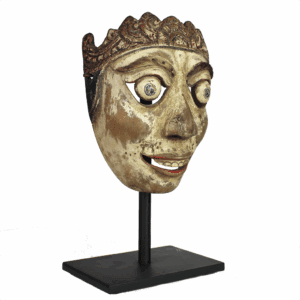Vintage Topeng Dalem, Mask of King, Museum Stand, Indonesia (1322)
Original price was: $550.00.$450.00Current price is: $450.00.H: 7.25″ W: 6″ D: 3.25″ | FREE SHIPPING WITHIN CONTINENTAL U.S.
Vintage mask of a king made by Balinese carver on island of Lombok blending Hinduism and animism. Mounted on museum quality stand.




